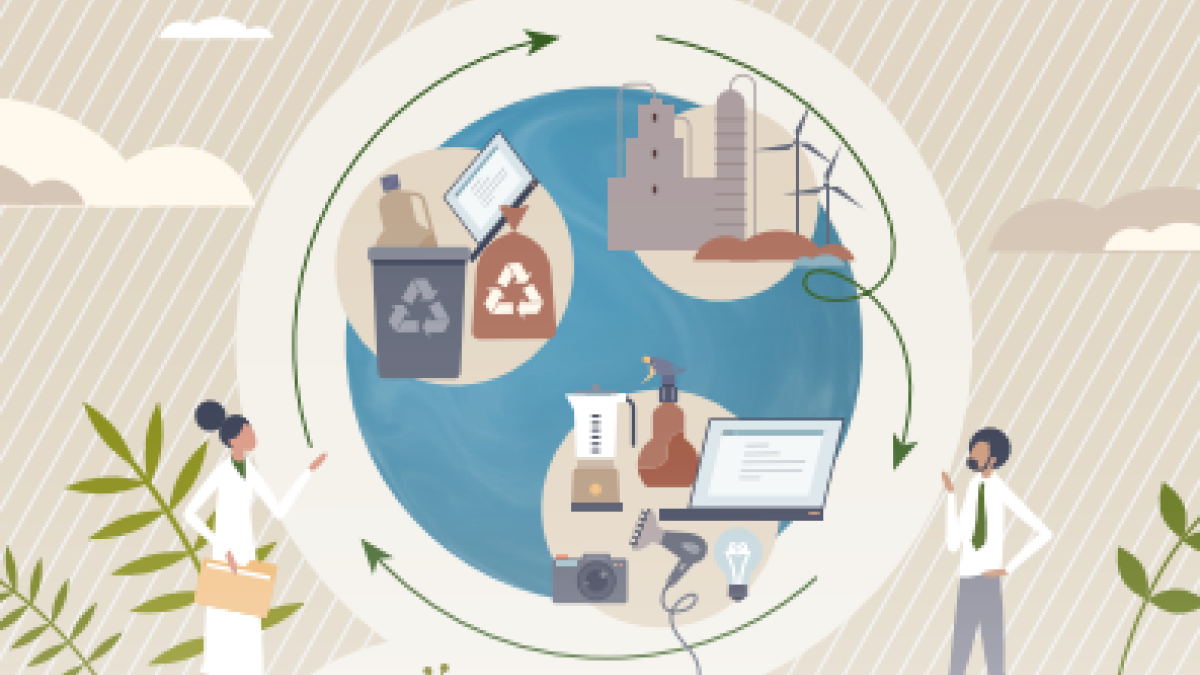The COVID-19 pandemic impacted the world in many ways, including straining the global supply chain, calling for greater attention to sustainable practices and procedures within it. In a recent United Nations report, a group of Arizona State University researchers assessed recent trends in “sustainable procurement,” otherwise referred to as “sustainable purchasing,” where entities factor social, economic and environmental criteria into the procurement process.
Increasingly, these entities are considering how to leverage their purchase of goods and services to advance their sustainability goals.
The report features work from Julie Ann Wrigley Global Futures Laboratory scholars and graduate students. “Sustainable Public Procurement 2022 Global Review” examines trends based on data collected from more than 320 organizations, 45 national governments, 26 expert stakeholder interviews and more than 200 research articles.
The review is broken into two parts, the first of which focuses on national governments and the second on the private sector, international organization and the roles of supporting entities. A review is released roughly every five years and tracks global progress in sustainable procurement.
Nicole Darnall, foundation professor in the School of Sustainability and director of the Sustainable Purchasing Research Initiative, said ASU was contacted by the United Nations Environment Programme (UNEP) to be the lead research institution on the development of the report. The collaborative report included researchers and writers from entities such as UNEP, Laval University in Canada and the University of Turin in Italy.
The report was presented at a public webinar hosted by UNEP on Jan. 26, where over 700 people registered for the event.
“Last time this report was published, it was around 60 pages. This one is more than 200,” she said. “The page length reflects the greater level of global interest in sustainable purchasing and that the topic is appealing to a wider range of stakeholders and across all sectors.”
The 2022 review is unique to previous reports in both its length and its inclusion of COVID-19. Darnall said survey participants were asked how the COVID-19 pandemic impacted stakeholder ability to advance sustainable purchasing, but to her surprise, two-thirds of respondents said it either had no effect on their sustainable purchasing or actually increased their sustainable purchasing focus.
“We had thought the pandemic would have pushed organizations to revert back to low-cost purchasing,” Darnall said. “Actually, the opposite occurred. Most individuals responding to our survey said that the pandemic helped amplify their sustainable purchasing efforts.”
Justin Stritch, a global futures scholar and associate professor in ASU’s School of Public Affairs, said COVID-19 created a disruption in supply chains that brought sustainability to the forefront of the procurement process.
“In one of our interviews, somebody said they were starting to see more sparks of hope for sustainable procurement in the wake of COVID-19,” he said. “The recovery model was challenging people to rethink how they conduct all aspects of their business, including procurement, that created new opportunities to be sustainable.”
Stritch said surveys were distributed in three languages and included feedback from both public and private sectors.
“It was a valuable process, and I think something I am particularly proud of is that we were able to move quickly with that information,” he said. “We were able to get a more complete picture of patterns from the last five years that exceeded even our expectations.”
Another source of pride for both Darnall and Stritch was the inclusion of graduate students in the 2022 review. Angela Fox, who graduated with a Master of Arts in sustainability from the School of Sustainability, worked on the report while she was a student.
“Being able to work with such a global and diverse team from start to finish was an amazing experience,” Fox said. “I helped write one of the annexes and it was my first time being published in a report like this. ASU played a major role in stakeholder interviews and a worldwide survey. This review was possible because it was so collaborative.”
Fox said the collaborative nature of the review assisted in conveying the scope of sustainable procurement and potential outcomes that may come out of current trends.
“Sustainable procurement has such a large reach,” Fox said. “People often don't realize that procurement means anything an entity needs to buy. Making those decisions with sustainability and justice at the forefront has real potential to mitigate negative environmental and social impacts."
More Environment and sustainability

ASU prof turns trash into treasure
The Research Corporation for Science Advancement, or RCSA, regularly hosts a series of discussions known as Scialog, a…

Best outdoor experiences are shared and build connections, recreation professor says
Steve Sassaman doesn’t really need to tell you he’s an outdoorsman. One look at his full, dark beard gives a vibe that clearly…

ASU offers new project-based courses for global leaders of tomorrow
Addressing complex challenges requires innovative solutions.This is why the College of Global Futures — with its four academic…


